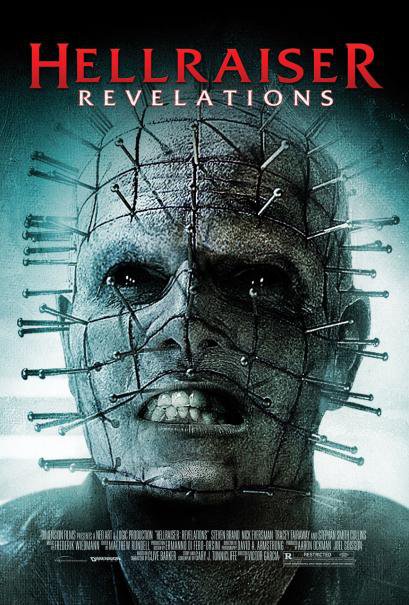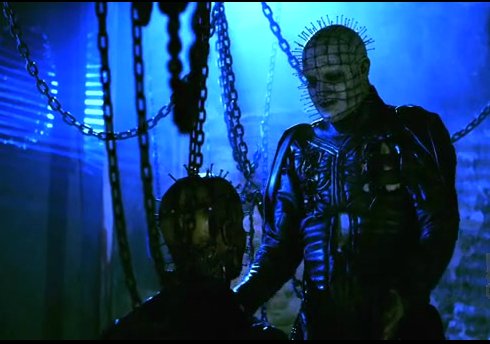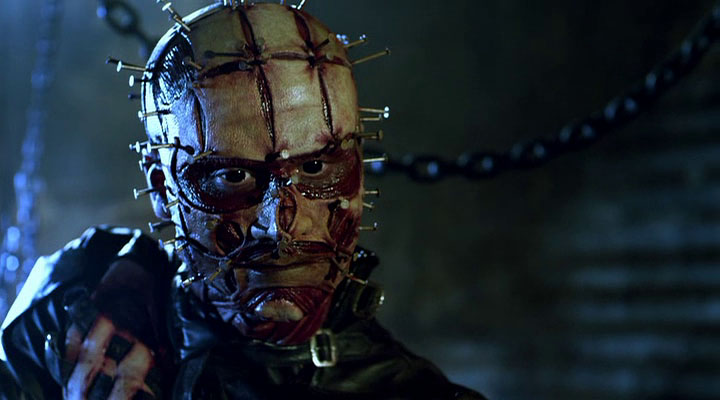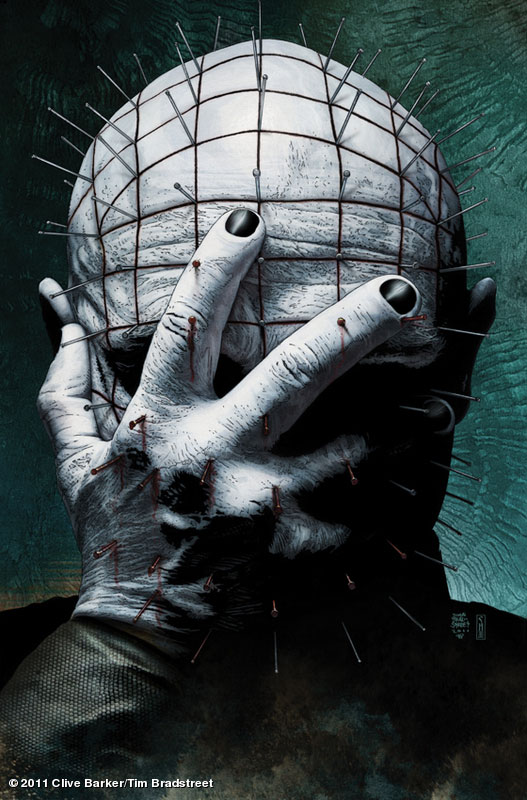The Hellraiser movie series used to be one of my favorite franchises. The story-lines, the shadowy cinematography, the costume designs, and the bloody special effects were some of the elements that engaged me perfectly. The entertaining atmosphere of the films was a combination of fear, horror, and erotica, and it kept on working for me.
Hellraiser paved the way, of course, playing perfectly into Clive Barker’s novella, “The Hellbound Heart”, introducing Doug Bradley as Pinhead, the prince of pain.
Hellraiser 2: Hellbound seemed to go off track by bringing the hapless mortals into hell and having Dr. Channard strip the other cenobites of their power in a struggle of authority that seemed a bit ridiculous.
Then things went a bit awry, as Hellraiser 3: Hell on Earth literally brought hell to earth, as well as the ghost of Pinhead’s human soul, Elliot Spencer, as a guide through an old radio.
When the cenobites went into space in Hellraiser: Bloodline, most fans figured that the end of the franchise was near, as only the Leprechaun horror franchise attempted to come back from that, but the explanation of the history of the LeMarchand family and the box kept the story from falling too flat.
Hellraiser: Inferno attempted to investigate the idea of psychological torture instead of physical, and re-introduce the The Engineer that is briefly shown in the first movie, a staple in the novella. Unfortunately the mood and acting didn’t hold the presence of the earlier movies.
Hellraiser: Hellseeker brings about a vengeance motif, which would seem beneath the cenobites. Luckily, the film surpasses Inferno, and not just because Ashley Laurence, playing Kirsty Cotton, returns to the franchise.
With Hellraiser: Deader, we are sent off to beautiful Bucharest, Romania, where a trainload of mangled bodies couldn’t save this movie from losing direction, particularly with the use of full CGI blood at the end.
Finally, Hellraiser: Hellworld attempts to bring the franchise into the 21st century with a MMORPG game of cenobites, however we never really see the game played, the story was boring, and the plot device about how they all died is the biggest cop-out in film. It would seem that Hellworld would be the final nail in the coffin.
Introducing Hellraiser: Revelations.
A couple of guys, Steven and Nico, run off to Tijuana because they’re bored with their pampered lives and want to go see a donkey show. They decide to bring a camera along to film the events. Luckily, this isn’t one of those amateur camcorder movies, although it does seem like it through the first few minutes of the movie. If you’re like me and get a headache from such movies, bear with it.
While in Tijuana, they meet a homeless guy who gives them our old friend, the Lament Configuration. Upon opening it, and thanks to amateur camcorder footage, we see a very portly Pinhead come on-screen. We then learn that we’ve been watching a video with Steven’s mother on the camcorder it was shot on, and the boys have disappeared.
Luckily, the box came with the video camera in Steven’s bag, and his not so little sister, Emma, opens it briefly, apparently just long enough for Steven to get out. Or did he? All is revealed as Steven’s parents and Nico’s parents get together for a missing-persons anniversary full of pain and drama that most of us Hellraiser fans would like to forget.
Let us start with what was good about this movie:
1) Tracey Fairaway as Emma Craven was some decent eye candy in this mess of a movie. While the incestuous plot device with her brother Steven was an odd nod to the morbid sexiness between Frank and Julia in the original Hellraiser, it didn’t seem overly forced. This helped give Revelations a “feast of flesh” theme that could have been so much more, if it wasn’t so brief and haphazard.
2) Trace Fairaway as Emma Craven was the only decent thing about this movie, enough to say it again.
Now for the bad:
1) Fat Pinhead, played by Stephan Smith Collins, seemed to be a caricature of Doug Bradley’s Pinhead. With a $300,000 production budget and quick filming, this casting was destined to be doomed without Bradley, but to find such a polar opposite was ridiculous.
2) Pinhead Jr. just added to the caricature of the whole movie. To give it credit, the way Pinhead Jr. was created seemed plausible: he lost his skin, and wanted it back. Fat Pinhead nailed his flesh to his face: mission accomplished. The problem is that even that slim, sensible horror is lost, because there has already been a Pinhead. It was always interesting to see the way new cenobites were created from their own vices, even if it was a walking CD player with a head. This time around, I felt cheated.
3) The story-line was muddled, at best, throwing in random lust scenarios into a top-heavy lust scenario that had already been done repeatedly in the series. This time, it was done the worst ever. Add the randomness of Steven’s return (*SPOILER* How did he get captured by the cenobites the second time? Or, did he coincidentally show up when Emma opens the box?), a “tell-all” reason to why Nico is such an ass at the end that was a throwaway theme, and an open ending that makes us fear for the sequel, and we are given the most nonsensical Hellraiser story ever created.
4) Death by getting your face peeled all seems boring the third time it is done…in the same movie.
5) Nothing is revealed, except the idea that The Weinstein Company rushed this movie through so that their rights to the franchise wouldn’t expire.
After this mess of a movie, I welcome the Hellraiser remake, and that is not something I ever say lightly.
I give this movie 1 out of 5 Pinhead face-palms. Even if the film is for free on-demand, don’t bother. It’s better to think this film had never been born.





